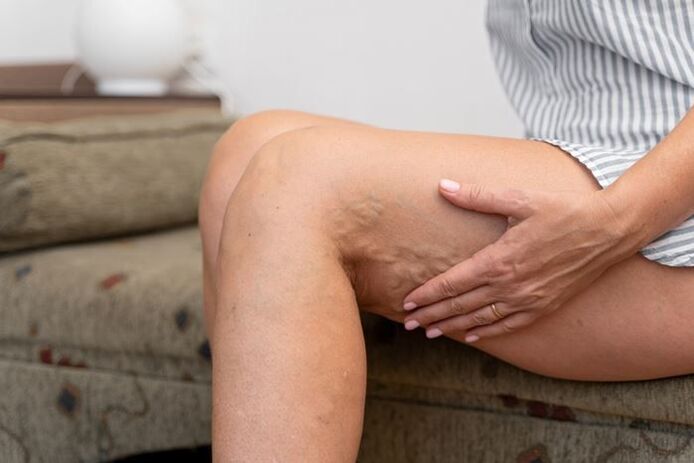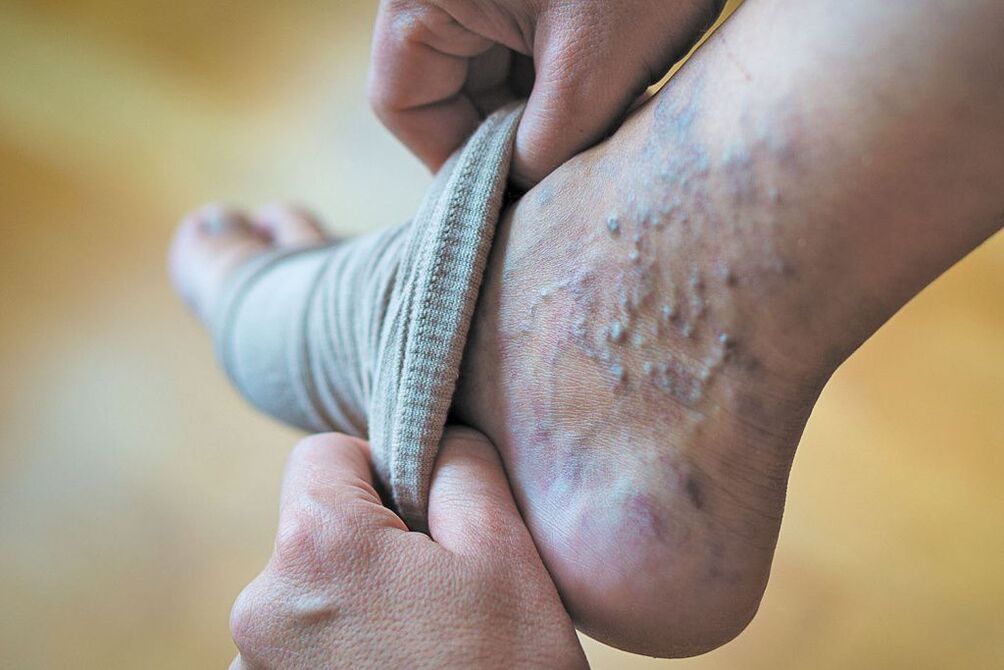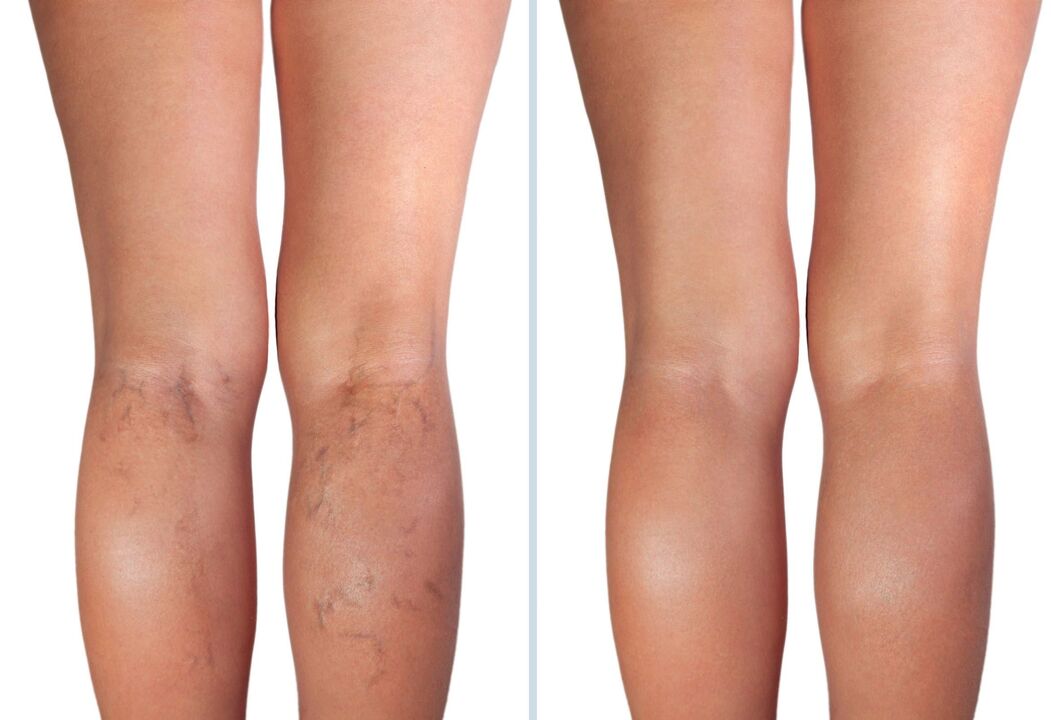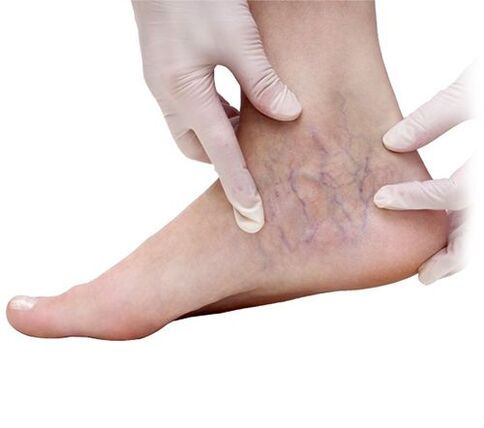
- Uneven increase in vein lumen and length,
- Due to pathological changes in the vein wall, the veins become thinner, stretched, and their tension and elasticity decrease, forming nodules in the thinned areas of the veins.
- Venous valve insufficiency and impaired blood flow.
How varicose veins develop
Types and forms of varicose veins

Types of varicose veins
Symptoms of varicose veins

The initial stage of varicose veins - 1st degree varicose veins
Symptoms of second degree varicose veins, compensatory phase
Symptoms of Third Degree Varicose Veins - Decompensation Phase
Degree 4 Varicose Veins - Complication Stage
- Phlebitis - inflammation of the veins;
- Thrombosis - the formation of a blood clot (thrombus) in a vein, which may cause blockage of the blood vessel;
- Trophic ulcers - form where the affected veins are unable to provide adequate blood flow from the skin, causing the tissue's nourishment (nourishment) to be destroyed.
causes of varicose veins
- Genetic predisposition (heredity) - congenital weakness of vein walls, rupture of vein valves;
- Women – Women are 4-6 times more likely to develop varicose veins than men;
- hormone imbalance;
- hormonal contraception;
- Pregnancy, especially multiple gestation;
- Heavy physical activity (heavy physical labor, strength sports);
- Conditions and diseases that cause increased intra-abdominal pressure (chronic respiratory disease, constipation, etc. )
- Diseases that negatively affect blood vessels (hyperglycemia, diabetes, stress surges, etc. );
- Work characteristics - standing or sitting for long periods of time, sudden temperature changes, prolonged exposure to high or low temperatures;
- Being overweight or obese, which increases pressure on the legs and pelvic area;
- Lack of vitamin C and other beneficial substances needed by the vascular system;
- A sedentary lifestyle and bad habits can damage blood vessels and cause additional tension.
Diagnosis of varicose veins

Treatment of varicose veins - modern technology
- Eliminate or reduce the severity of symptoms - pain, swelling, cramping - that cause particular discomfort to the patient;
- Restore and improve blood vessel function - from capillaries to deep veins, improve valve function, restore damaged blood vessel walls, and increase their elasticity and strength;
- Improve the rheological properties of blood and reduce its viscosity;
- Improves the function of the lymphatic system.
- Prevent the further development of diseases and complications;
- Improve patients' quality of life.
- Conservative treatment– Advice on prevention and lifestyle changes, medication, stress treatment;
- non-surgical invasive procedures- Sclerotherapy, echo sclerotherapy, foam sclerotherapy (foam form therapy), etc. ;
- Surgery- Combination approaches and procedures for phlebectomy, thermal obliteration, stripping, more complex varicose complications and treatment of trophic ulcers of the lower limbs.
Conservative approach to treating varicose veins
- lifestyle changes;
- medical treatement;
- Compression therapy.
- Venoconstrictors and vasoprotectants;
- anticoagulants and thrombolytics;
- anti-inflammatory and analgesics;
- Vascular regeneration agent.
non-surgical invasive procedures
Surgical treatment of varicose veins
- Eliminate appearance defects;
- Reduce subjective symptoms (pain, burning, paresthesia, leg heaviness, etc. );
- Prevent saphenous vein deterioration;
- Prevent varicose bleeding;
- Prevention of thrombophlebitis;
- Reduce and prevent the development of venous edema;
- Reduces manifestations and prevents the development of hyperpigmentation, lipodermatosclerosis;
- Accelerates healing of venous trophic ulcers and prevents recurrence.
- Eliminate pathological vertical and/or horizontal reflux;
- Eliminate great saphenous varicose veins.























